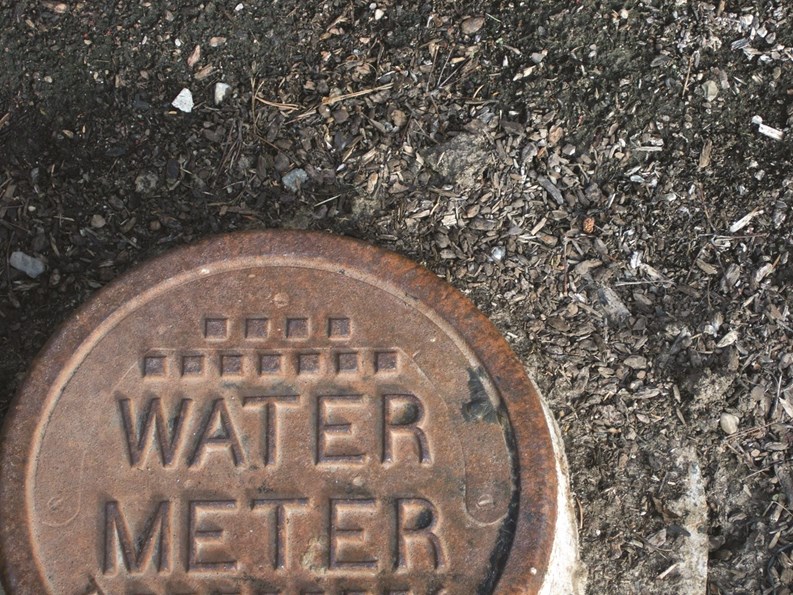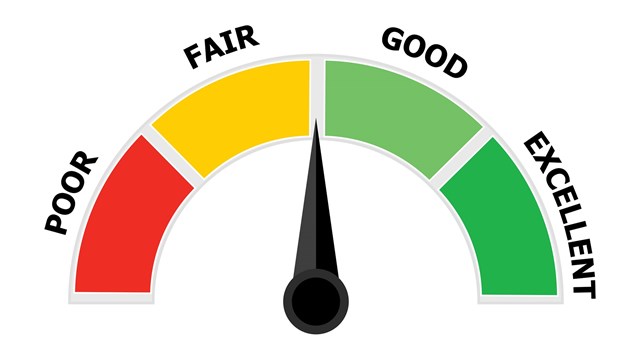How much water do you use in a month? If you live in a Chicago-area condominium or cooperative with a single meter for the entire property, you probably don’t know.
Your association includes its monthly water and sewer bill in the monthly assessment that you and your condo or co-op neighbors pay. Your portion may be a flat rate based on the number of units in your community, although some boards tweak the numbers to strive for fairness.
“They may divide the bill based on square footage, number of occupants, bathroom fixtures, or a combination,” says Jerry Baker, president of National Exemption Service, Inc., a Safety Harbor, Florida-based utility metering and billing company with Chicago-area clients. While such adjustments can help, Baker says they can’t account for individual usage quirks such as teenagers taking long showers, or snowbirds who winter in Florida and use no Chicago water for three or four months.
Arthur Blankenship, president of Argen Inc., a metering and billing firm in Conyers, Georgia, is immediate past chair of the Utility Management & Conservation Association. He says the solution to such problems is submetering—installing an individual meter in each unit and billing each unit separately for its own usage, plus a nominal monthly fee to a third-party billing service. In effect, the servicing company becomes the condo or co-op’s accounts-payable department for all utility accounts and anything else that can be quantified, such as cable TV, high-speed Internet, and garbage and trash collection.
The Inner Workings
The process of installing a submetering system begins with a legal review. The Illinois Commerce Commission allows submetering, says Kyle Nelson, client development executive for Ocius LLC, a Chicago-based billing company.
The HOA’s documents may need an amendment to say the owners will be responsible for paying the water, electricity, and gas bills. “In some cases the developer already put it in the condo docs or has it as a possibility,” Baker notes.
Blankenship says the documents also should provide guidance on bad debt collections, which may require separate procedures for owners and for renters.
After the legal review, the process of installing a submetering system begins with a site survey of the property and the way in which the water, electricity, and gas is being supplied to the unit. The point is to create a schematic/engineering layout for the installation project to measure the commodity and remotely read each unit’s usage for billing purposes.
The results will determine where and what kind of meters to install, and how best to read them. Typically a small transmitter on each meter sends a radio signal at predetermined intervals to a receiver in an office somewhere in the community. In a large multi-building community, repeaters may be needed to boost the signal.
In the Chicago area, installation of submeters costs about $150 per door for new construction, and $250 to $350 per door for retrofit into an existing building, estimates Joshua McCallum, Ocius’ director of operations.
Retrofit Cost Variables
McCallum says the variables that can influence the cost of a retrofit include things like “brittle piping that makes it a riskier job; where the piping is located [and where] it comes into each unit; installing the remote reading system, and the service type. Metering electric and gas cost more than metering water.” Ocius and other similar companies can bill all of a building’s utilities and generate a combined bill itemized by utility for each individual customer.
In some older buildings, pipes rise to serve vertical stacks of kitchens or bathrooms, so a single unit won’t have a single entry point in which to place a meter. Others have cross plumbing where the main entry pipes serve two units instead of one. “In high-rises, you have to make sure you’re accounting for any loss of pressure,” adds Matthew Carroll, senior submeter coordinator for Ocius.
Also incompatible with submetering are buildings where boilers have a continuous water line from one unit to the next, as there is no way to measure individual unit usage, Baker says.
If a building’s piping is too convoluted or its capital reserves too depleted for submetering, the service companies can offer Resident Utility Billing System (RUBS). The community still gets one bill from the water provider; the service company apportions the bill according to some suitable formula, and collects from the various payers. “Usually it’s based on the number of occupants, or square footage, or a combination,” Blankenship says. “We don’t have actual metered consumption, so even though we can produce highly accurate bills, there is room for some error.”
Convincing Owners
Only about five percent of Blankenship’s residential clients are condos—the rest are rental apartment buildings “with a single owner who can do whatever he wants, given a proper legal platform.” Some common-interest communities can’t get enough owners to agree to put a submetering program in place. Non-believers who resent having to pay a water bill directly don’t realize that submetering will reduce their assessments, and in turn raise the value of their property.
“You can’t use capital funds for operating expenses,” Blankenship explains. “Water and sewer is your largest controllable operating expense. The cost has risen to the point that HOAs have to draw down the capital budget (aka, the reserves) to pay for it. I’ve seen water and sewer rates tripling over four or five years. When that happens and you’re not keeping up, the association is in danger of collapsing. You need to control it through operating funds, not the capital budget.”
Notwithstanding the sometimes-arduous workings of residential democracy, “we’ve got some very good HOA clients,” Blankenship says. “They’re very sophisticated, they run good programs. Once you get it going, because you have owners involved, it runs a lot smoother than a rental property.”
Baker compares submetering to going out to dinner with friends. “You get water to drink, share an appetizer. They order wine and expensive entrees. At the end of the dinner, they suggest splitting the bill equally. Submetering is like separate checks. It doesn’t hinder your use; it makes you responsible for what you use.
“It’s like going from film to digital cameras. It allows for a lot more flexibility. You pay for your own usage, rather than having your usage co-mingled with others in the community where you live. It rewards you for being frugal, versus someone renting a unit who doesn’t care.”
The payback is only two to six months, and the reduction in usage can range from 15 percent to 50 percent, Blankenship says. “If a property has good management and maintenance, there’s not that much to save because it’s already running right. If a property has deferred maintenance for years and leaks all over the place, we can pinpoint the problems and get them taken care of quickly.”
Mixed-Use Submetering
Another benefit of submetering is the billing company’s verification service, McCallum says. “If the utility sends a bill for the entire building, there’s no way for the HOA or management company to break that down and check the bill. You don’t know if they read your meter or estimated it. In mid-summer you may still be billed based on winter usage. You can have errors between properties in the same zip code from the same provider. This usually wouldn’t be caught by the management entity. We check the provider. We’re getting actual usage with submeters.”
Rates are set to maintain a utility’s infrastructure and ensure that it can continue to operate. Where water rates are high, the incentive to submeter and promote conservation is stronger. Chicago’s rates have been historically low due to the abundant supply of fresh Lake Michigan water at its doorstep, but annual increases of 15 percent to 25 percent since 2008 are beginning to awaken interest in submetering—primarily in mixed-use buildings with both residential spaces and retail, such as grocery stores and restaurants.
“The residential portion is not submetered,” McCallum says, “but we put submeters on the commercial space, check how much of the water bill is going there, and base the association’s assessment on the rest.”
Chicago’s 2015 water rate is $28.52 per 1,000 cubic feet, which equates to $3.81 per 1,000 gallons. Meanwhile, the sewer rate—calculated as a percentage of the water bill—has risen from 84 percent in 2008 to 100 percent in 2015.
The city’s Bureau of Water Supply sucks nearly a billion gallons of lake water daily into a crib two miles offshore and sends it through tunnels to two treatment and purification plants. Distribution of this water extends throughout Chicago and into many neighboring communities—though it you live in the suburbs, you’re probably paying more for it.
Understanding Rates
Elmhurst, for example, pumps an average of 4.9 million gallons per day (MGD) and has maximum capacity of 20 MGD. Its residents currently pay $2.40 per 1,000 cubic meters, equivalent to about $3.79 per 1,000 gallons, plus $1.30 to the DuPage Water Commission (which delivers Lake Michigan drinking water to 25 communities west of Chicago) and $1.10 to the Elmhurst Water Commission. The sewer charge is $1.53 per cubic meter, equivalent to $5.80 per 1,000 gallons.
Carol Stream, a village in Illinois, also gets DuPage Water Commission water, pumping 4 MGD on an average day, but as much as 7 MGD during a heat wave. The rates are $9.85 per 1,000 gallons—$6.73 for water, $3.12 for sewer. Carol Stream also imposes a summer surcharge of $1.20 per 1,000 gallons for bills above 11,000 gallons, to discourage excess usage.
Suburbs without Lake Michigan water draw from local rivers and from deep and shallow wells. If they don’t already have Lake Michigan water, they’re unlikely to get it. The Great Lakes-St. Lawrence Basin Water Resources Compact, approved by the U.S. Congress and signed into law in 2008, prohibits diversion of Great Lakes basin water except in counties that straddle the subcontinental divide.
Three cities in southeastern Wisconsin—New Berlin, Pleasant Prairie, and Waukesha— took advantage of that loophole to acquire small quantities of drinking water from Lake Michigan, then send it back across the subcontinental divide for discharge to the lake (after treatment, of course).
Looking Forward
Submetering in Chicago is likely to grow legs once the city’s 2013 Energy Benchmarking Ordinance takes full effect. Sponsored by Mayor Rahm Emanuel, it requires large buildings in the city to track and report their energy use. In 2015, large residential buildings with 250,000 or more square feet must benchmark their energy use, have the figures verified by a licensed professional, and report the results to the city. In 2016, the requirement extends to residential buildings with 50,000 to 250,000 square feet.
Thereafter, annual reporting is required, with verification every three years. The city will report each year on energy-efficiency trends, and after a one-year grace period it will publish the annual results building by building beginning in 2017.
The computer software for this program is the U.S. Environmental Protection Agency’s EnergyStar Portfolio Manager. Although Chicago’s Web site emphasizes benchmarking of electricity and gas usage, the EPA Web site clearly states that water also is included. In addition, through a Multi-Family Energy Savings Program for buildings with three or more units, ComEd offers energy-efficient products including some that can help to conserve water: low-flow showerheads, faucet aerators, and pipe insulation.
From 2017 on, McCallum says, “The benchmarking will disclose the effectiveness of usage for those commodities. If building A uses utilities more effectively and at lower cost than building B, people can choose to live in the building where they have lower utility costs.”
George Leposky is a freelance writer and a frequent contributor to The Chicagoland Cooperator.







Leave a Comment